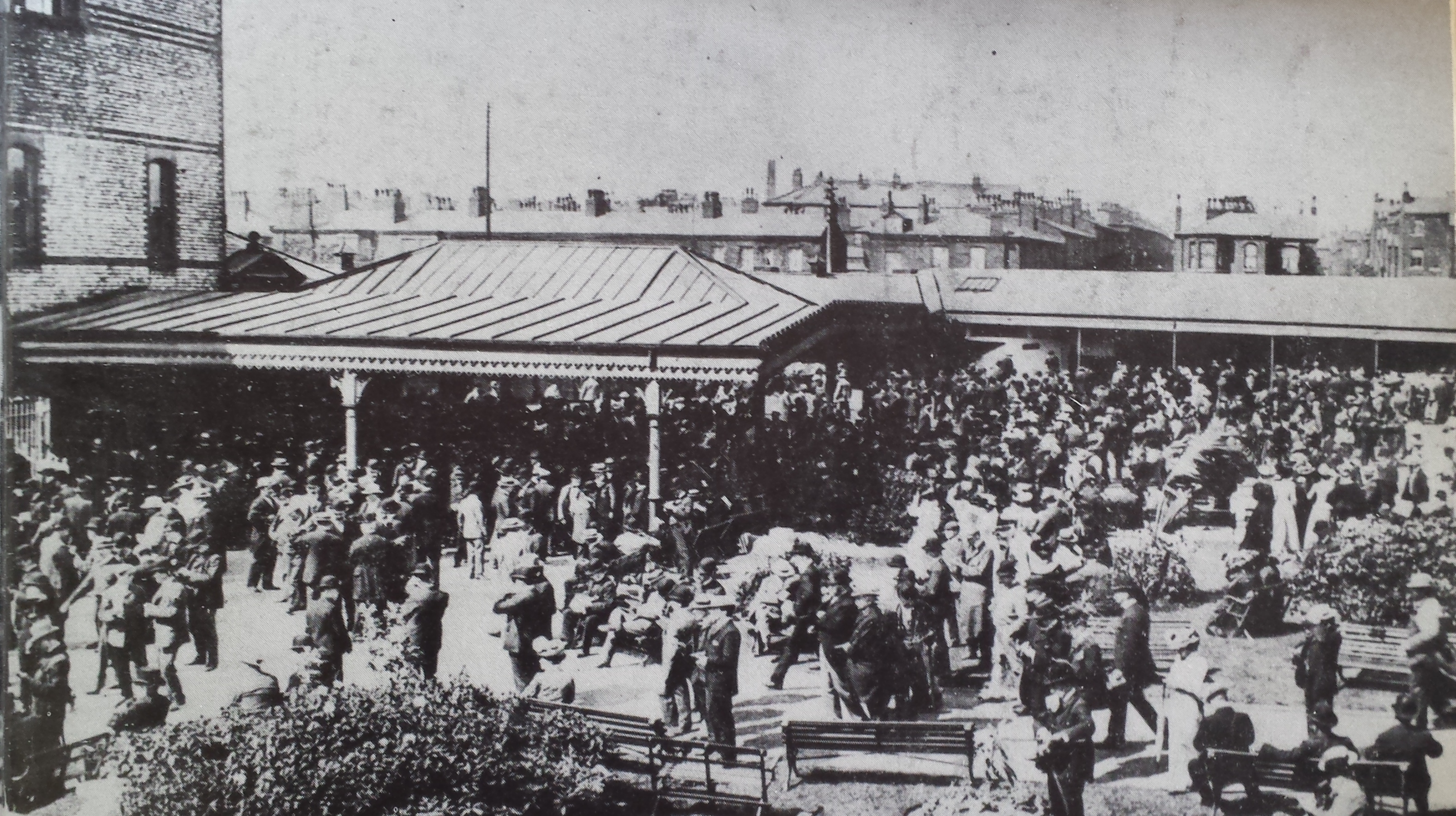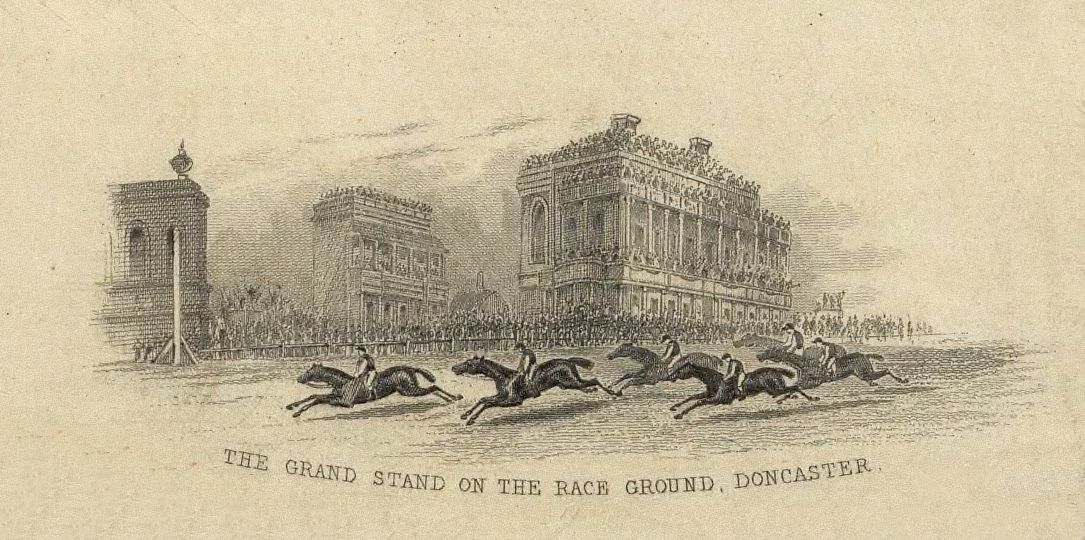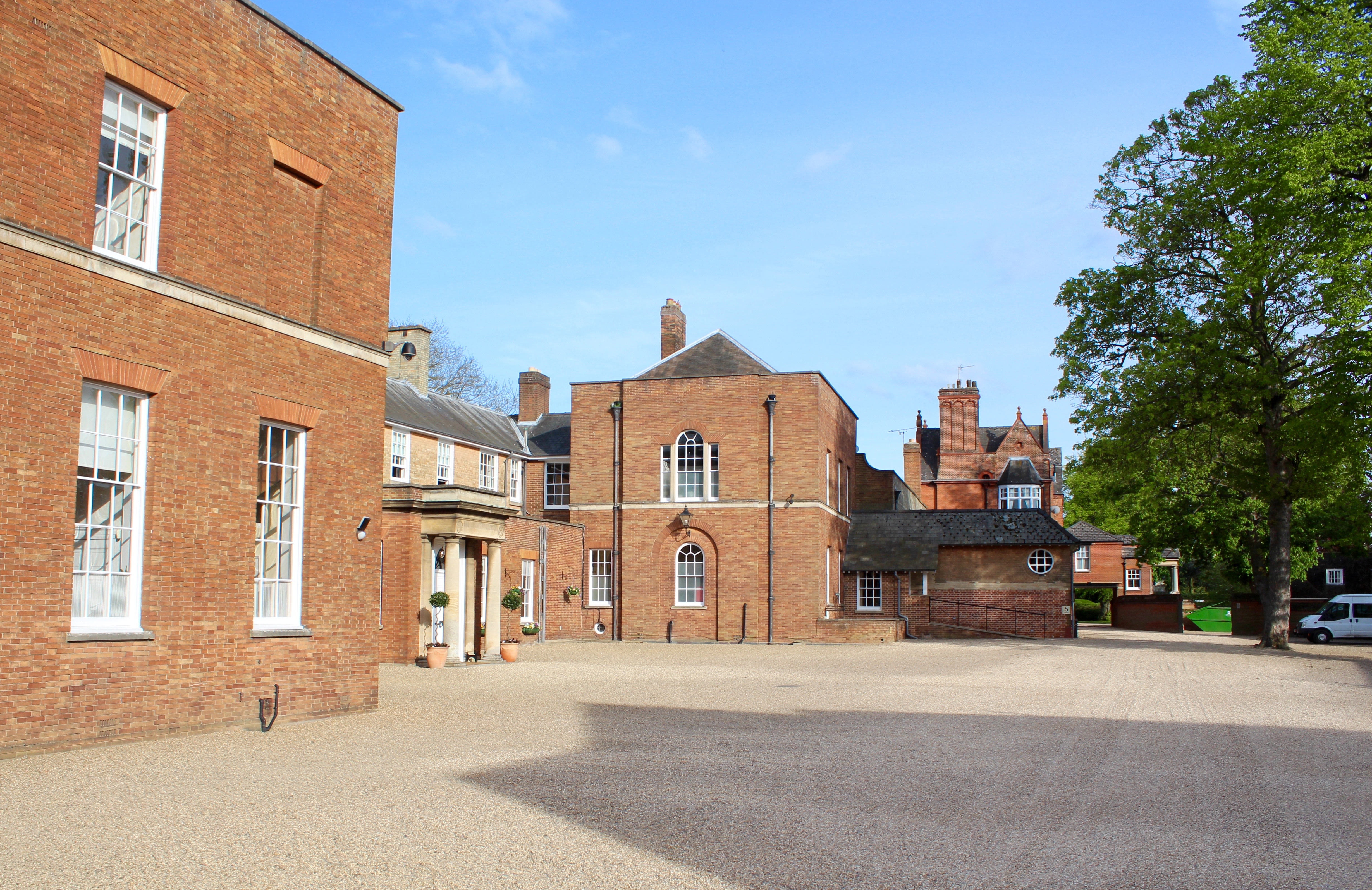|
Sun Castle
Sun Castle (1938 – March 1942) was a British Thoroughbred racehorse who raced during World War II and was best known for winning the classic St Leger in 1941. After showing promise as a two-year-old he finished third in the 2000 Guineas the following spring but ran poorly when strongly-fancied for the New Derby. He won a race at Newbury in August before taking the substitute New St Leger at Manchester Racecourse. He died in the following spring after contacting tetanus. Background Sun Castle was a good-looking bay horse bred at Beningbrough Hall stud in Yorkshire by Enid Scudamore-Stanhope, Countess of Chesterfield. He was sired by Hyperion, who won The Derby and the St Leger Stakes in 1933 and went on to become an internationally significant sire: Sun Castle's successes enabled Hyperion to claim the second of his six sires' championships in 1945. Sun Castle's dam, Castle Gay, was a moderate racehorse, winning one minor race, but was a half-sister of the Eclipse Stakes ... [...More Info...] [...Related Items...] OR: [Wikipedia] [Google] [Baidu] |
Hyperion (horse)
Hyperion (18 April 1930 – 9 December 1960) was a British-bred Thoroughbred, a dual classic winner and an outstanding sire. Owned by Edward Stanley, 17th Earl of Derby, Hyperion won GBP £29,509 during his racing career—a considerable sum at the time. His victories included the Epsom Derby and St Leger Stakes. He was the most successful British-bred sire of the 20th century and champion sire in Great Britain six times between 1940 and 1954. Hyperion was by the good sire Gainsborough, who was one of three wartime Triple Crown winners in Great Britain. His dam, Selene, was by Chaucer, a talented son of the undefeated St. Simon. Selene was also the dam of such good sires as Sickle (GB) (sireline ancestor of Native Dancer and Sea Bird), Pharamond (US), and Hunter's Moon (GB). Hyperion was inbred in the third and fourth generation to St. Simon, and was trained by George Lambton at Newmarket. Hyperion, who stood just 15.1 hands high, was one of the smallest horses to ever win a ... [...More Info...] [...Related Items...] OR: [Wikipedia] [Google] [Baidu] |
Manchester Racecourse
Manchester Racecourse was a venue for horse racing located at a number of sites around the Manchester area including; Kersal Moor, New Barnes, Weaste and Castle Irwell, Pendleton, then in Lancashire. The final home of the course, Castle Irwell, was closed in 1963. Despite its name, the course was never actually located within the boundaries of the ancient township of Manchester or the subsequent city of Manchester. Location and history The earliest known horse races in the Manchester area were run at Barlow Moor, first recorded in 1647, and again from 1697 to 1701 and the earliest record of horse-racing on Kersal Moor is from a notice in the '' London Gazette'' of 2–5 May 1687.Farrer, William and Brownbill, J. (editors) (1911). 'Townships: Broughton', ''A History of the County of Lancaster'': Volume 4, pp. 217–222. URL: http://www.british-history.ac.uk/report.aspx?compid=41408. Date accessed: 20 February 2008 There were a number of other short-lived courses or on ... [...More Info...] [...Related Items...] OR: [Wikipedia] [Google] [Baidu] |
Fractional Odds
Odds provide a measure of the likelihood of a particular outcome. They are calculated as the ratio of the number of events that produce that outcome to the number that do not. Odds are commonly used in gambling and statistics. Odds also have a simple relation with probability: the odds of an outcome are the ratio of the probability that the outcome occurs to the probability that the outcome does not occur. In mathematical terms, where p is the probability of the outcome: :\text = \frac where 1-p is the probability that the outcome does not occur. Odds can be demonstrated by examining rolling a six-sided die. The odds of rolling a 6 is 1:5. This is because there is 1 event (rolling a 6) that produces the specified outcome of "rolling a 6", and 5 events that do not (rolling a 1,2,3,4 or 5). The odds of rolling either a 5 or 6 is 2:4. This is because there are 2 events (rolling a 5 or 6) that produce the specified outcome of "rolling either a 5 or 6", and 4 events that do n ... [...More Info...] [...Related Items...] OR: [Wikipedia] [Google] [Baidu] |
Newmarket Racecourse
Newmarket Racecourse is a British Thoroughbred horse racing venue in Newmarket, Suffolk, Newmarket, Suffolk, comprising two individual racecourses: the Rowley Mile and the July Course. Newmarket is often referred to as the headquarters of Horse racing in the United Kingdom, British horseracing and is home to the largest cluster of training yards in the country and many key horse racing organisations, including Tattersalls, the National Horseracing Museum and the National Stud. Newmarket hosts two of the country's five British Classic Races, Classic Races – the 1,000 Guineas and 2,000 Guineas, and numerous other Group races. In total, it hosts 9 of British racing's List of British flat horse races#Group 1, 36 annual Group One, Group 1 races. History Racing in Newmarket was recorded in the time of James VI and I, James I. The racecourse itself was founded in 1636. Around 1665, Charles II of England, Charles II inaugurated the Newmarket Town Plate and in 1671 became the fi ... [...More Info...] [...Related Items...] OR: [Wikipedia] [Google] [Baidu] |
Scottish Union
Scottish Union (1935–1954) was a British Thoroughbred racehorse and Horse breeding#Terminology, stallion best known for winning the British Classic Races, classic St Leger Stakes in 1938. He was one of the highest-rated British two-year-olds in 1937, when his wins included the Middle Park Stakes at Newmarket Racecourse. In the following year he ran prominently in all three legs of the Triple Crown of Thoroughbred Racing#English Triple Crowns, Triple Crown, finishing second in the 2000 Guineas and Epsom Derby, The Derby before his win in the Leger. As a four-year-old he won the Coronation Cup but appeared beaten for stamina in the Ascot Gold Cup before being retired to stud where his record was moderate. He died at the age of nineteen in 1954. Background Scottish Union was a bay horse with a small white star (horse marking), star bred by the Sledmere Stud of Driffield, East Yorkshire. He was from the first crop of foals sired by Cameronian (horse), Cameronian, the winner of ... [...More Info...] [...Related Items...] OR: [Wikipedia] [Google] [Baidu] |
Doncaster Racecourse
Doncaster Racecourse (also known as the Town Moor course) is a racecourse in Doncaster, South Yorkshire, England. It hosts two of Great Britain's 36 annual Group 1 flat races, the St Leger Stakes and the Racing Post Trophy. History Doncaster is one of the oldest (and the largest in physical capacity) established centres for horse racing in Britain, with records of regular race meetings going back to the 16th century. A map of 1595 already shows a racecourse at Town Moor. In 1600 the corporation tried to put an end to the races because of the number of ruffians they attracted, but by 1614 it acknowledged failure and instead marked out a racecourse. Doncaster is home to two of the World's oldest horse races: The Doncaster Cup The earliest important race in Doncaster's history was the Doncaster Gold Cup, first run over Cantley Common in 1766. The Doncaster Cup is the oldest continuing regulated horse race in the world. Together with the Goodwood Cup and Ascot Gold ... [...More Info...] [...Related Items...] OR: [Wikipedia] [Google] [Baidu] |
Epsom Downs Racecourse
Epsom Downs is a Grade 1 racecourse on the hills associated with Epsom in Surrey, England which is used for thoroughbred horse racing. The "Downs" referred to in the name are part of the North Downs. The course, which has a crowd capacity of 130,000 when taking into account people watching from the Epsom Downs, an area freely available to the public, is best known for hosting the Derby Stakes, which has come to be widely referred to as The Derby or as the Cazoo Derby for sponsorship reasons, the United Kingdom's premier thoroughbred horse race for three-year-old colts and fillies, over a mile and a half (2400 m). It also hosts the Oaks Stakes (also widely referred to as The Oaks) for three-year-old fillies, and the Coronation Cup for horses aged four years and upwards. All three races are Group 1 races and run over the same course and distance. The Chairman of the course since 2015 is Julia Budd. The course is owned by the Jockey Club. The Queen has attended the Derby most ... [...More Info...] [...Related Items...] OR: [Wikipedia] [Google] [Baidu] |
Newmarket, Suffolk
Newmarket is a market town and civil parish in the West Suffolk district of Suffolk, England. Located (14 miles) west of Bury St Edmunds and (14 miles) northeast of Cambridge. It is considered the birthplace and global centre of thoroughbred horse racing. It is a major local business cluster, with annual investment rivalling that of the Cambridge Science Park, the other major cluster in the region. It is the largest racehorse training centre in Britain, the largest racehorse breeding centre in the country, home to most major British horseracing institutions, and a key global centre for horse health. Two Classic races, and an additional three British Champions Series races are held at Newmarket every year. The town has had close royal connections since the time of James I, who built a palace there, and was also a base for Charles I, Charles II, and most monarchs since. Elizabeth II visited the town often to see her horses in training. Newmarket has over fifty horse training stabl ... [...More Info...] [...Related Items...] OR: [Wikipedia] [Google] [Baidu] |
Yearling (horse)
A yearling is a young horse either male or female that is between one and two years old.Ensminger, M. E. ''Horses & Tack: A Complete One Volume Reference on Horses and Their Care'' Rev. ed. Boston:Houghton Mifflin Co. 1991 p. 470 Yearlings are comparable in development to a very early adolescent and are not fully mature physically. While they may be in the earliest stages of sexual maturity, they are considered too young to be breeding stock. Yearlings may be further defined by sex, using the term "colt" to describe any male horse under age four, and filly for any female under four. Development and training Generally, the training of yearlings consists of basic gentling on the ground; most are too young to be ridden or driven. Yearlings are often full of energy and quite unpredictable. Even though they are not fully mature, they are heavier and stronger than a human and require knowledgeable handling. Many colts who are not going to be used as breeding stallions are gelded ... [...More Info...] [...Related Items...] OR: [Wikipedia] [Google] [Baidu] |
Eclipse Stakes
The Eclipse Stakes is a Group races, Group 1 Flat racing, flat Horse racing, horse race in Great Britain open to horses aged three years or older. It is run at Sandown Park Racecourse, Sandown Park over a distance of 1 mile, 1 furlong and 209 yards (2,002 metres), and it is scheduled to take place each year in early July. History The event is named after Eclipse (horse), Eclipse, a celebrated 18th-century racehorse. It was established in 1886, and the inaugural running was won by Bendigo (horse), Bendigo. At that time, it was Britain's richest ever race. The prize fund of £10,000 was donated by Leopold de Rothschild at the request of General Owen Williams (British Army officer), Owen Williams, a co-founder of Sandown Park. The Eclipse Stakes was contested by high-quality fields from its inception. It was won by Ayrshire, the previous year's Epsom Derby, Derby winner, in 1889. The first three finishers i ... [...More Info...] [...Related Items...] OR: [Wikipedia] [Google] [Baidu] |
Leading Sire In Great Britain And Ireland
The title of champion, or leading, sire of racehorses in Great Britain and Ireland is awarded to the stallion whose offspring have won the most prize money in Britain and Ireland during the flat racing season. The current champion is Frankel, who replaced his sire Galileo as the leading sire in 2021 after Galileo had won the title twelve times. Unlike the similar title for leading sire in North America, the stallion in question does not need to have resided in Great Britain or Ireland during his stud career, although the vast majority have done so. Northern Dancer is the most notable example of a North American-based stallion who won this title. The Northern Dancer sire line has dominated the list for the last several decades, mostly through his son Sadler's Wells (14 titles) and grandson Galileo. Records Most championships: * 14 – Sadler's Wells – ''1990, 1992–2004'' * 13 – Highflyer – ''1785–1796, 1798'' * 12 – Galileo – ''2008, 2010–2020'' * 10 – Sir Pet ... [...More Info...] [...Related Items...] OR: [Wikipedia] [Google] [Baidu] |
St Leger Stakes
The St Leger Stakes is a Group 1 flat horse race in Great Britain open to three-year-old thoroughbred colts and fillies. It is run at Doncaster over a distance of 1 mile, 6 furlongs and 115 yards (2,921 metres), and it is scheduled to take place each year in September. Established in 1776, the St Leger is the oldest of Britain's five Classics. It is the last of the five to be run each year, and its distance is longer than any of the other four. The St Leger is the final leg of the English Triple Crown, which begins with the 2000 Guineas and continues with the Derby. It also completes the Fillies' Triple Crown, following on from the 1000 Guineas and the Oaks. The St Leger has rarely featured Triple Crown contenders in recent decades, with the only one in recent years being the 2012 2,000 Guineas and Derby winner Camelot, who finished second in the St Leger. History Early years The even ... [...More Info...] [...Related Items...] OR: [Wikipedia] [Google] [Baidu] |
.jpg)



